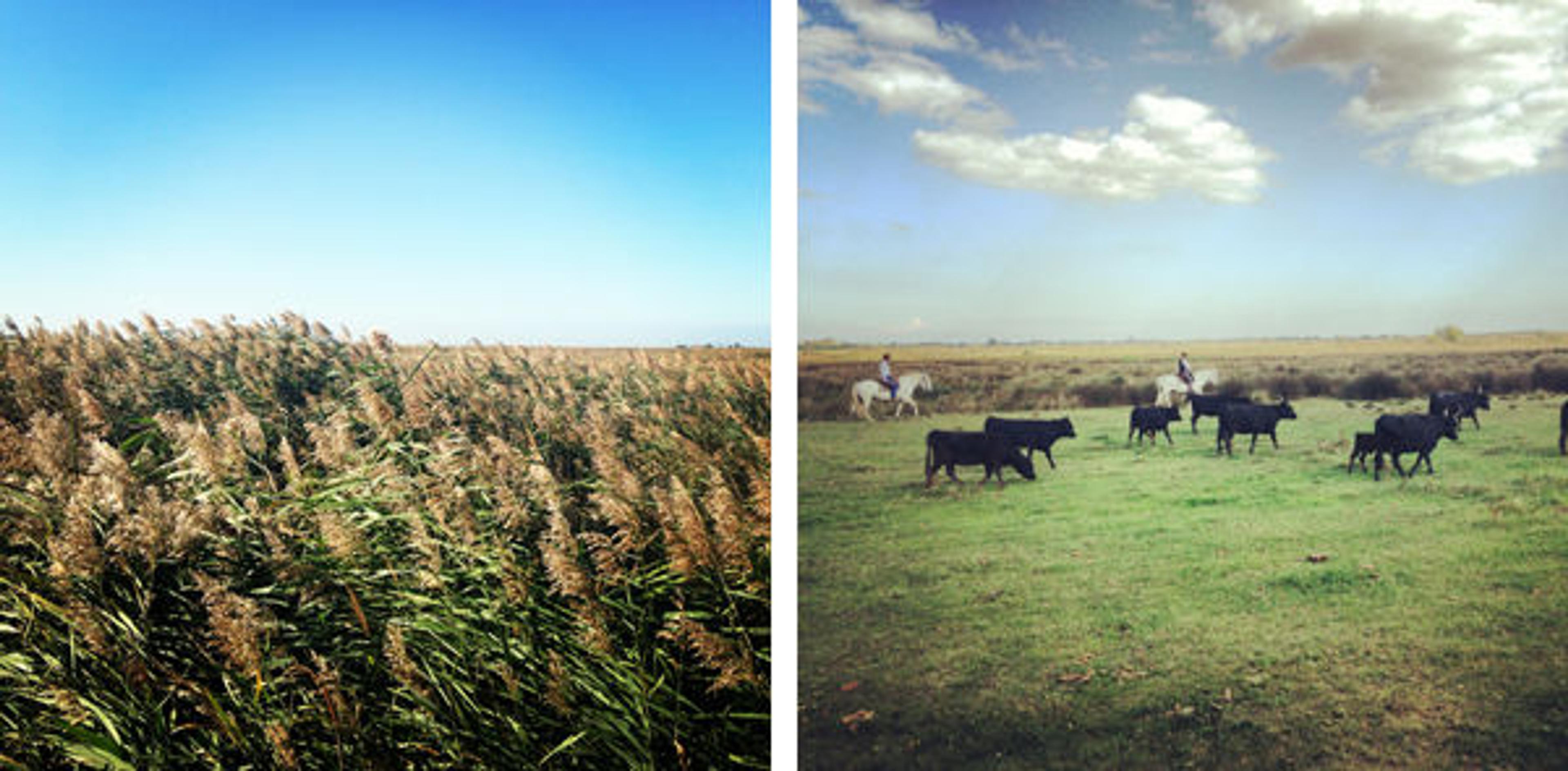Two views of the Camargue. Photographs by Daphne Birdsey
«We've spent the last few days of our trip in and around the city of Arles. The nearby region of the Camargue, also known as the Rhone Delta, is where the Rhone River ends and the Mediterranean Sea begins. Its salty marshland is renowned for its wild, white horses and pink flamingos.»
The Camargue region has been inspired by the Spanish tradition of breeding bulls for races and fights. We visited one such farm, where the owners explained the difference between Camargue and Spanish bulls—the ones in the Camargue are a bit smaller and their horns point up. Furthermore, the Camargue bulls aren't injured in their fights; in fact, they often perform until they are about fourteen or fifteen years old and are respected like soccer stars. Rather than killing the bulls, matadors win money based on how many ribbons they retrieve off the bulls' horns. After showing us how they work with the animals, the owners of the farm invited us to enjoy a kir (a traditional French drink of white wine with a splash of cassis) at their lovely ranch-style home.
The spirit of Vincent Van Gogh presides over all that we see here—from the many views he painted of the Camargue (the reeds, the thatched huts, the people, the wild animals) to the ones he captured in the city of Arles. He created three hundred paintings during the fifteen months that he lived in the city. We visited the Hotel Dieu, a hospital where he stayed for a short period in 1888, which has re-created the colorful garden he painted, and I had lunch outside the yellow Café Terrace that he so beautifully portrayed at night. One can walk in his footsteps to see many more such scenes in person.
The author (right) with Curator Maryan Ainsworth
We also saw important Roman ruins, including an arena and amphitheater, as well as the Romanesque Church of St. Trophime, a French treasure and one of the starting points of the pilgrimage to Santiago de Compostela, Spain.
The Church of St. Trophime. Photograph by Daphne Birdsey
